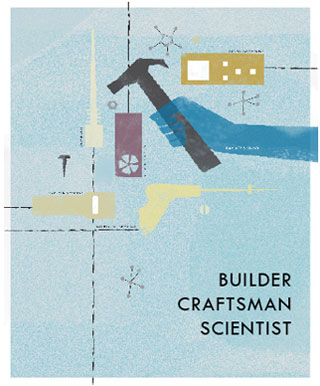Stacey Foisy, H&H’s Aging-In-Place Specialist, reports on the summit and its implications.
Stacey Foisy, our certified Aging-In-Place specialist (CAPS) participated in the recent “Staying at Home: Housing Options for an Aging Oregon” summit  sponsored by AARP Oregon, Rogue Valley Council of Governments and Oregon DHS Seniors and People with Disabilities.
sponsored by AARP Oregon, Rogue Valley Council of Governments and Oregon DHS Seniors and People with Disabilities.
“Jerry Cohen, AARP Oregon’s director, presented research conclusions by the AARP Public Policy Institute that resonated deeply with Hammer & Hand’s work,” Stacey told me. “In fact, the three solutions he outlined read as if cribbed from our playbook: universal design modifications, home performance retrofits, accessory dwelling units.”
Here’s what Cohen’s “Strategies to Meet the Housing Needs of Older Adults” specifically recommended:
1. Modifying homes to accommodate changing needs.
“The most straight-forward way for older adults to improve physical accessibility in their home is through home modification. Home modifications may include the adoption of universal design or ‘visitability’ features that improve a home’s safety and ease of use for all family members and make the home accessible to visitors of all abilities. Home modifications can range from a simple addition of lever door handles to more complex widening of doorways.”
Hammer & Hand’s Universal Design Services address this need.
2. Weatherizing homes to reduce energy costs and improve health  outcomes.
outcomes.
“Weatherizing a home can make the prospect of aging in place much more appealing. Weatherization includes improving insulation, replacing drafty windows, and install weather stripping, and energy-efficient windows.
“Modest home improvements to increase energy efficiency have been shown to reduce utility costs by 21 percent, which can translate into significant savings.
“Bearing lower energy costs burdens, owners and renters in weatherized homes can also afford to maintain appropriate home temperatures, preventing health risks associated with extreme weather conditions our unhealthy, unsafe methods of climate control.”
The home performance work that we do, much of it through the Clean Energy Works Oregon program, meets this need in a comprehensive way, informed by advanced building science.
3. Providing housing types in transit-oriented developments .
.
“Improved coordination of housing, land-use, and transportation policy to ensure that older adults have the option of living in housing they can afford that is located within walking distance of current or planned public transit stops. Also, revisions to zoning policies to allow for a variety of housing types to meet the needs of older adults (e.g., high-density rental and owner-occupied housing, accessory dwelling units)”
Accessory Dwelling Units, often called ‘Granny Flats’, are a perfect example of this kind of housing diversity. (By the way, please join us at our ADU Cider Mixer & Open House this Wednesday, November 16.)
Our purpose in pointing out these parallels is not to crow about how enlightened we are as builders (though I suppose we’re implying it!), but to emphasize that the leaders of policy research and advocacy for the aging are generating the same ideas for housing solutions as builders in the progressive building community.
Namely? We need to create diverse housing options for the aging, make sure that housing is safe and supportive of a wide range of abilities, and make sure it’s comfortable and healthy.
– Zack
Back to Field Notes